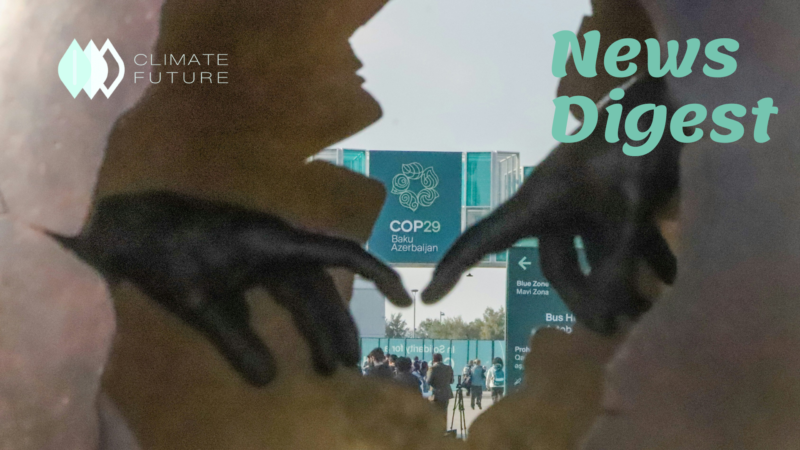Climate change: Ozone layer still well on track for full recovery

UN Photo/R. Kollar
The ozone layer above the Antarctic is expected to fully regenerate by 2066, according to data from the World Meteorological Organization’s yearly Ozone and UV Bulletin. This is because ozone-depleting compounds have been phased out due to the success of the Montreal Protocol and its Kigali Amendment. The Kigali Amendment’s emphasis on lowering hydrofluorocarbons can help with climate mitigation efforts, but UN Secretary-General António Guterres highlights the necessity for ongoing protective measures. Ozone might return to pre-hole levels by 2045 over the Arctic and 2040 worldwide, according to the UN meteorological agency. The bulletin also examines how a volcanic eruption and weather trends could affect the Antarctic ozone hole in 2023. Positive changes notwithstanding, atmospheric events continue to have a major impact on the growth of the ozone hole. The WMO highlights the necessity for additional studies to comprehend these factors and guarantee precise ozone layer monitoring. All things considered, the bulletin shows that the ozone layer is recovering and emphasizes how crucial it is to keep up protection measures.
Climate scientists sound alarm over Asia’s rising seas

Sea levels in the Pacific are rising more quickly than the average worldwide due to the warming of the Indian Ocean. As a result, there is a significant risk to coastal towns in the Asia Pacific region from more frequent and severe weather events, including floods, droughts, and tropical cyclones. Scientists are calling for swift global action to minimize the use of fossil fuels and shield local populations from the effects of sea level rise. Emissions of greenhouse gases trap heat, which leads to the melting of ice sheets and glaciers and an increase in sea levels. In the southwest Pacific, sea surface temperatures have risen three times quicker than the worldwide average since 1980, and the frequency of marine heat waves has doubled. Sea levels are rising in the area as a result of the Indian Ocean’s rapid warming as well. Being landlocked, the northern Indian Ocean basin exacerbates this warming. Rising sea levels are also caused by local issues like pollution and land subsidence. Climate scientists want urgent action at all levels to solve this pressing problem. Climate finance, which assists nations in lowering emissions and preparing for climate change, will be a major topic of discussion at the upcoming UN climate summit, COP29. However, to save their communities from the effects of sea level rise, local governments must act immediately.
Managing Asia’s healthcare waste and emissions remains challenging amid increasing climate risks

Five percent of carbon emissions worldwide are attributed to the healthcare sector, with the supply chain accounting for a significant amount of these emissions. This is alarming since health is at risk due to the aging population and rising climate-related hazards in the area. A lack of adequate waste management infrastructure, economic expansion, and an aging population all contribute to Asia’s 30% gross carbon emissions in the healthcare industry. Energy-intensive medical equipment, the requirement to preserve drug and vaccine efficacy during transportation, and a shortage of staff to monitor waste and emissions make decarbonizing the healthcare industry difficult. To require emissions and waste reductions in the healthcare industry, national policies are required. Businesses that provide healthcare solutions can cut waste and emissions by employing electric vehicles, recycling medical waste, collaborating with environmentally conscious partners, and putting greenhouse gas emissions tracking into place. Additionally, by minimizing patient travel, telemedicine helps save emissions. By implementing sustainable practices, making technological investments, and fostering innovation among its members, the healthcare sector must strike a balance between improving patient health and cutting waste and emissions.
Adoption rates for climate transition plans still low in Asia despite increased awareness and demand

Asia continued to be the most disaster-prone region in 2023 as a result of climate-related risks, with potential GDP losses of up to 24% in the absence of action. While there are ways for businesses to lessen their impact on climate change, such as by switching to renewable energy sources and consuming less energy overall, few take the initiative. Although two-thirds of Asian investors are aware of climate threats, just 28 percent have action plans that are in line with global targets. Plans for climate change go beyond just establishing emissions targets; they also include specific actions that a business can take to align its operations with net-zero aspirations. Transition planning, according to Paul Dickinson of Transition Value Partners, is the third stage of environmental responses, which comes after environmental disclosures and promises made under the Science-Based Targets initiative (SBTi). But just 0.6% of businesses fully reveal their important climate transition plans, according to CDP. Investor demand for transition plans is rising, but progress is hampered by issues like controlling transition costs and striking a balance between profitability and decarbonization. The pan-Asian insurer AIA is a prime example of leadership in the climate transition, with robust supervision procedures and science-based carbon reduction targets. Different disclosure frameworks continue to split the adoption of climate transition plans even though new standards such as those set forth by the International Sustainability Standards Board (ISSB), seek to provide a global baseline. Credible, scientifically supported plans will be necessary for businesses to accomplish climate targets and maintain investor trust as reporting requirements become more stringent.
References
https://news.un.org/en/story/2024/09/1154366
https://www.eco-business.com/news/climate-scientists-sound-alarm-over-asias-rising-seas



